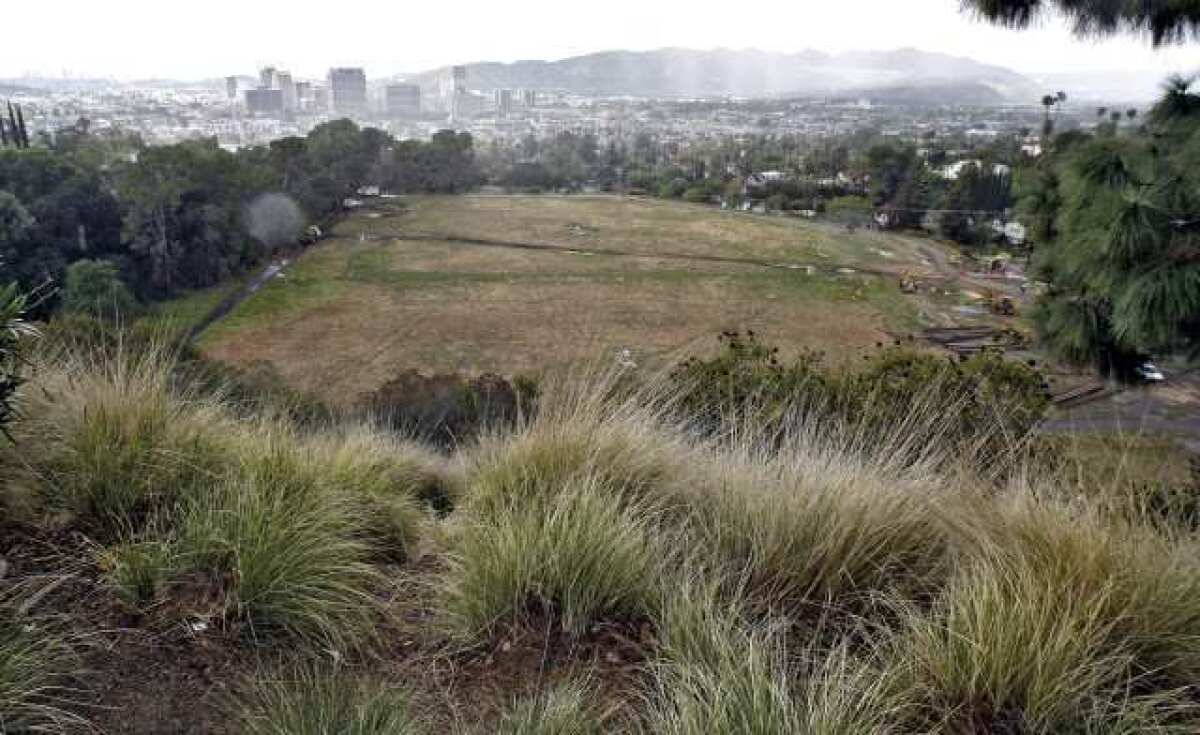Water pollutant found in Glendale test

- Share via
Glendale’s water was well within statelimits for contaminants in 2011, but recent tests turned up a pollutant not detected in 2010, according to the city’s water quality report released this week.
“Everything’s pretty consistent with what we’ve reported in the past,” said Dan Askenaizer, water quality manager for Glendale Water & Power. “Everything’s in compliance.”
But in 2011, Methyl Tertiary-butyl Ether, a chemical additive once used in gasoline, was found in north Glendale wells. However, even the largest sampling, 0.53 parts per billion, is far below a primary state limit of 13 parts per billion.
The last time Glendale officials detected the chemical was in 2009 at a high of 0.85 parts per billion, according to a city report.
Although the results are not alarming, officials are doing monthly tests, Askenaizer said.
Crescenta Valley Water District, which supplies water to some Glendale residents, began seeing high levels of MTBE several years ago. The district is suing several gasoline suppliers in an attempt to recoup the costs of cleaning up the chemical, which was in gasoline that allegedly leaked from underground fuel storage tanks into the groundwater.
Glendale also continues to study ways of stripping chromium 6, a cancer-causing contaminant, from its groundwater. The city currently blends local water with untainted imports to bring chromium 6 levels below state limits.
Other changes in 2011 include an uptick in water use, a change in cleaning methods and a new well.
Residents consumed 8.8 billion gallons of water, up from 8.4 billion gallons of water in 2010. However, consumption has not returned to 2009 levels of 9.16 billion gallons of water since lifting a mandatory conservation rule.
About 65% of the city’s water is imported from the Metropolitan Water District of Southern California. The rest comes from local sources, such as the San Fernando Basin and city wells.
The Foothill well, a new addition to the system, began operating in May 2011. It produces about 200 gallons per minute, saving the city about $245,000 per year in imported water costs, according to a city report.
The city began developing another well at the Rockhaven Sanatorium, also in North Glendale, but work has been on hold due to funding constraints, Askenaizer said. Once the well is completed, the city could get twice as much water — and savings — as it does from the Foothill well.
In June, the city plans to change the way it cleans water for La Crescenta and Montrose residents as state standards have become more stringent. Rather than using chorine, the city is set to use chloramines, which is how most of the city’s water has been treated since 1985.
See the water quality report at https://www.glendalewaterandpower.com/pdf/rpt_Water_Quality_2011.pdf.